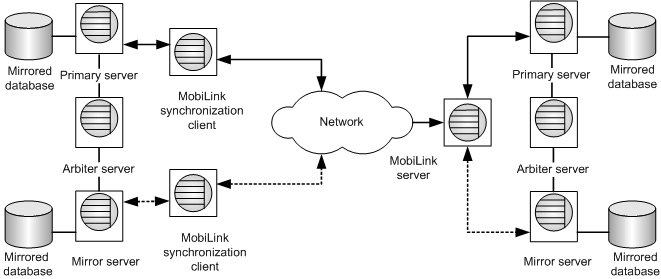This section describes how to configure MobiLink synchronization to run in a high availability environment using a SQL Anywhere consolidated database with SQL Anywhere remote databases. You can configure your MobiLink synchronization system to run the consolidated database in a high availability environment, or the remote database to run in a high availability environment, or both.
The following graphic shows MobiLink synchronization running in an environment where both the consolidated and remote databases are mirrored:

 High availability for SQL Anywhere consolidated databases
High availability for SQL Anywhere consolidated databases High availability for SQL Anywhere remote databases
High availability for SQL Anywhere remote databases Recovering from primary server failure
Recovering from primary server failure See also
See also |
Discuss this page in DocCommentXchange.
|
Copyright © 2012, iAnywhere Solutions, Inc. - SQL Anywhere 12.0.1 |